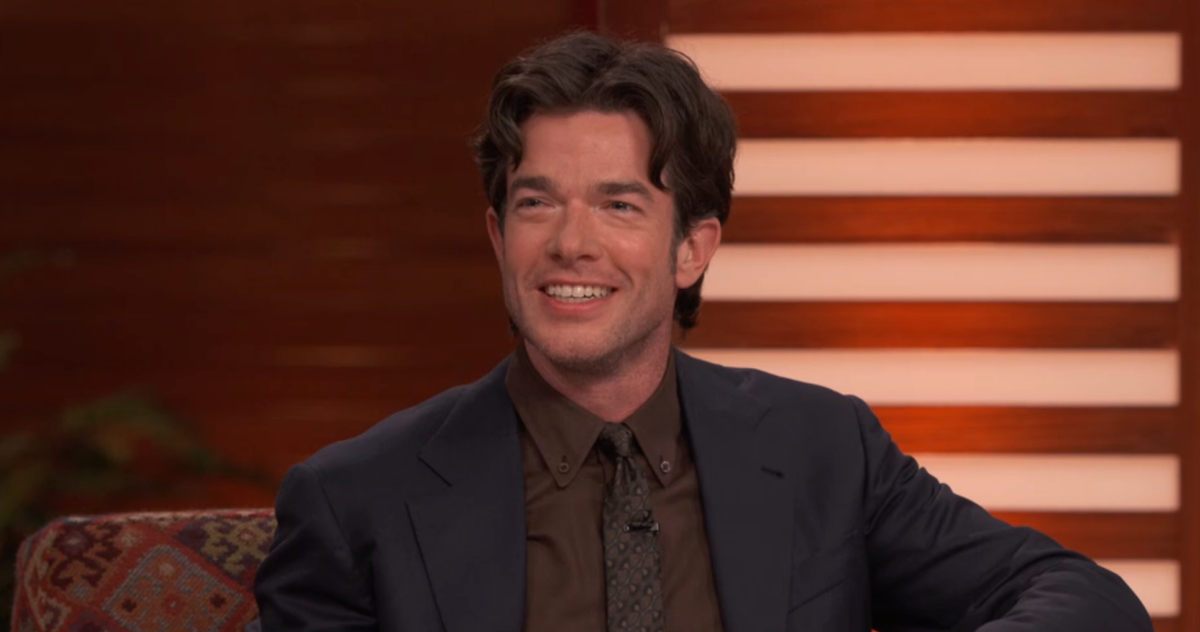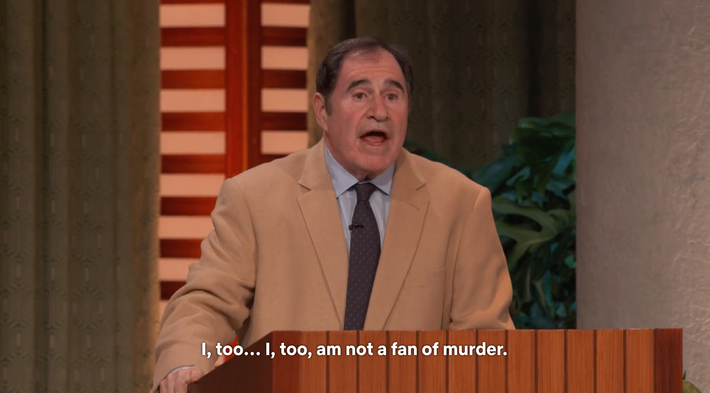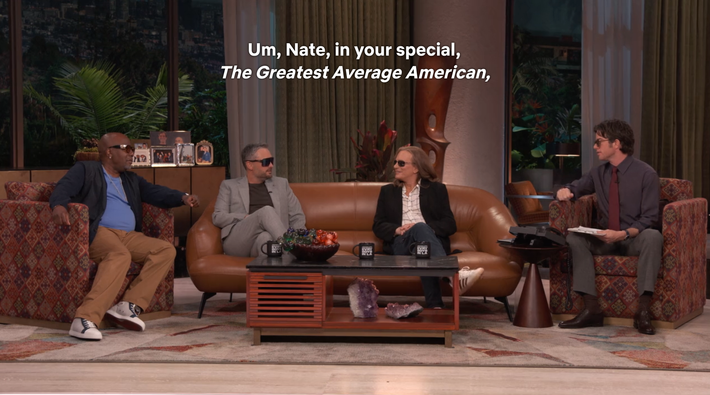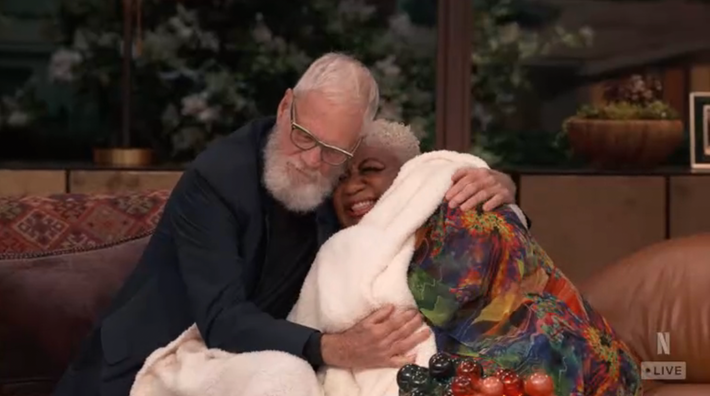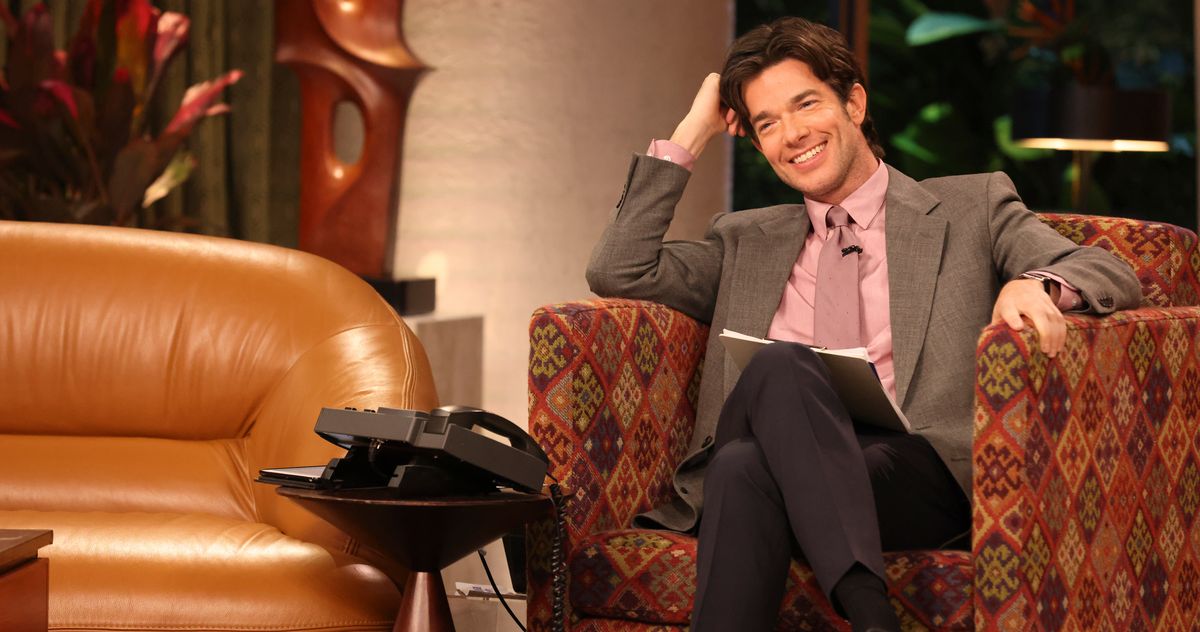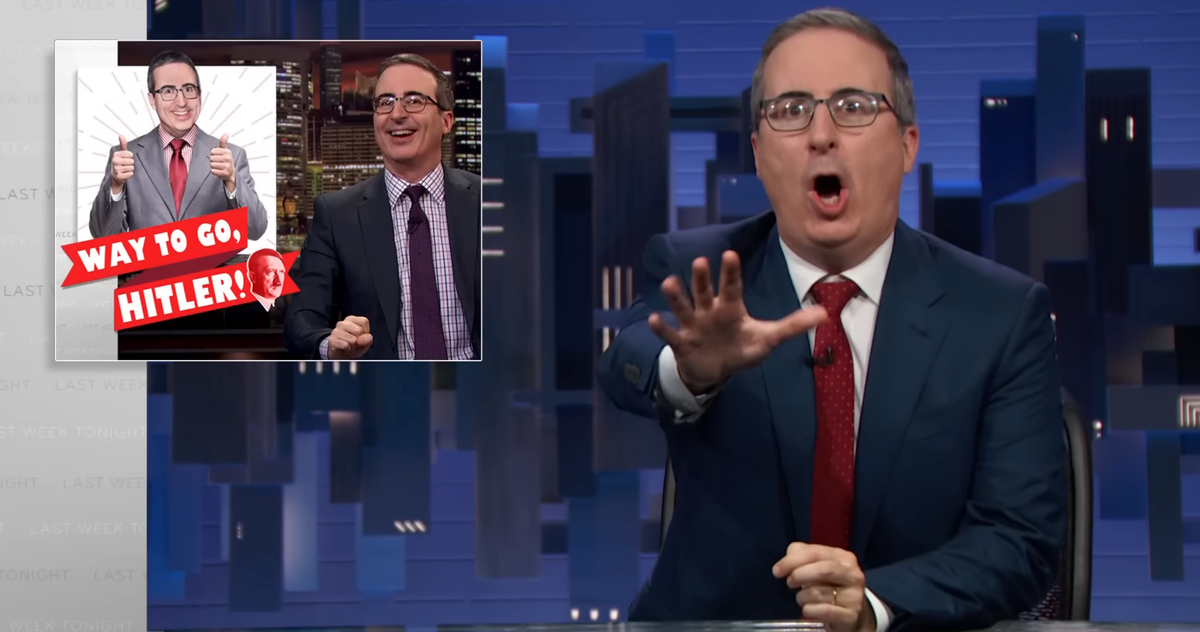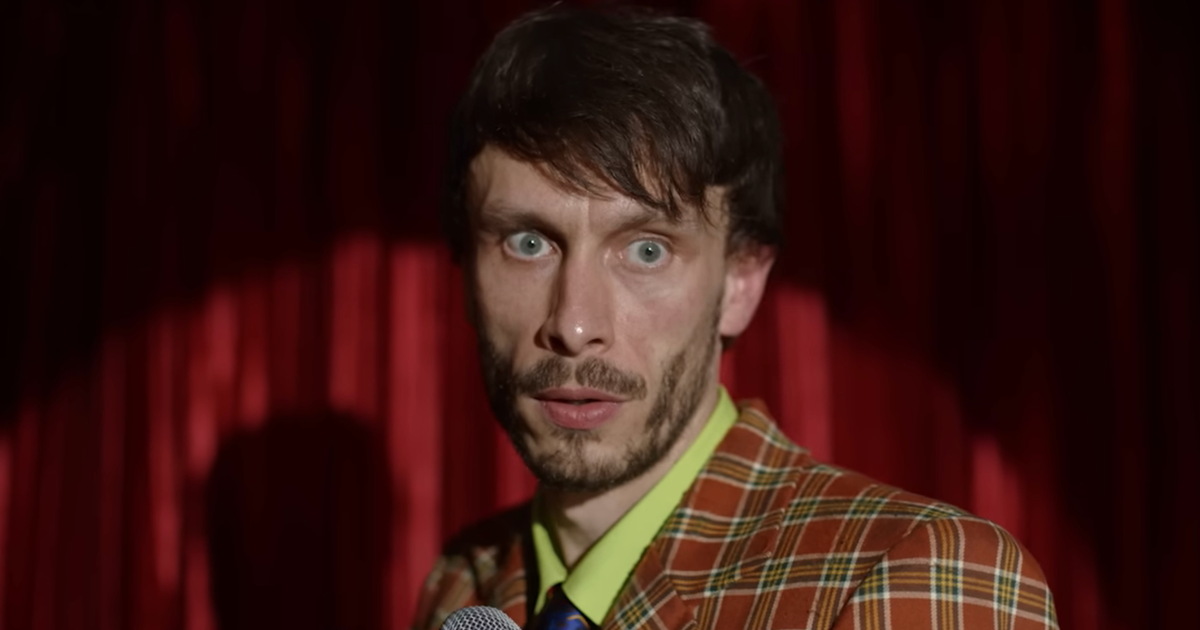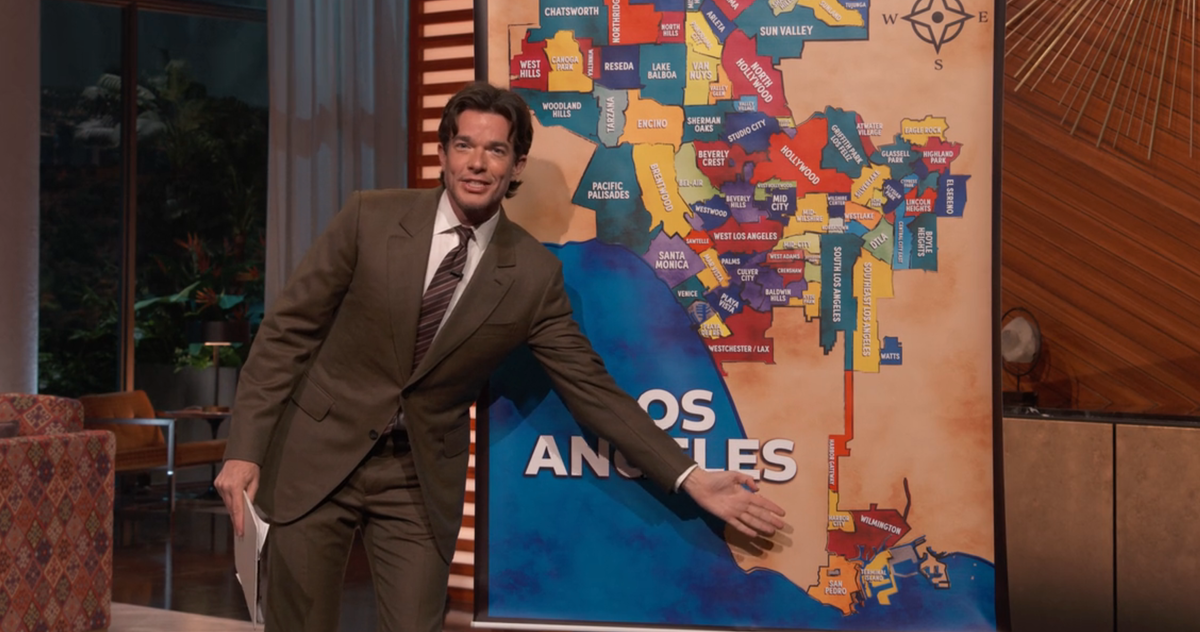John Mulaney’s Everybody’s in L.A. came on the late-night scene like a breath of fresh, weird air. For six episodes (the last one airs tonight, folks!), Mulaney has held court live on Netflix. For good or bad, what happened at 7:01-ish PT is what the whole world saw this week. The show focused on topics near and dear to Angelenos, like earthquakes and the paranormal. Guests such as Cassandra Peterson (a.k.a. Elvira) and Mulaney’s real-life hypnotherapist bumped up against comedians including Sarah Silverman and Jerry Seinfeld, who gushed flop sweat while having to talk about stuff that wasn’t promo or stand-up disguised as banter. Mulaney took calls, and the signal that he was about to hang up on you was that he’d ask what kind of car you drive. What will be gleaned from that information? Unclear.
What’s important is that Everybody’s in L.A. is unlike the usual, routinized, pretaped late-night television. Kind of. If there’s one big dig to make at the show, it’s that the guests endlessly comment on how weird it is. But it has clear precedents — namely The Chris Gethard Show, any telethon, and ’70s-phoning-it-in Johnny Carson. There’s a Carson episode on Tubi that is just (1) Johnny making fun of a guy for creating an elaborate domino-scape, (2) watching the dominos fall, (3) an Emmys recap, and (4) Truman Capote describing a murder someone confessed to him at a party. That’s as weird as this show.
It’s TBD whether we’ll ever see more Mulaney hosting late night. Maybe he’ll sub for Jimmy Kimmel again? Maybe everyone will be in Chicago next time? But if we never get another moment of Mulaney’s version of a public-access show, we can still learn a lot from it. What worked, what didn’t, and what can the normies take away from it?
Photo: Netflix
Shout it from the rooftops like it’s the secret to eternal life: Richard fucking Kind! When you have a true showbiz hoofer in your back pocket, you pull him out strategically. Kind, the show’s announcer, did pretaped bits, pretended to read a mystery novel, and reacted to Elvira’s ghost stories with aplomb. More shit like that on normal late night, please. Jimmy Kimmel Live! had this when Fred Willard was alive. Every late-night show needs to find the perfect character actor and hold onto them like they’re the door in Titanic.
Photo: Netflix
Give people a topic to discuss and it will simultaneously open celebs’ minds and shut down their snake-oil-salesman tendencies. “Coffee Talk” knew this before Everybody’s in L.A. knew this. (Vulture’s “Underrated” column knew this too, FWIW.) Something I’ve been grooving on in this show is seeing people who normally know what to say (the very famous) having to listen for a change. Will they pivot? Will they flounder? What happens when the person who has been taking up the conversational burden for decades is forced to shut up and listen to the pros and cons of invasive flora? Fun, that’s what!
Photo: Netflix
This is something the normal talk shows can take a W for. The least successful part of Everybody’s in L.A. was the awkward shoehorning of random Netflix-approved comics. Late night is essentially one big ad that is broken up with smaller ads; the guests are promoting stuff while the hosts are usually giving shout-outs to their podcasts or Olympic coverage or whatnot. They make it look pretty easy, but it’s not. The perpetual motion machine of a veteran talk-show host is no bullshit. Just welcoming endless guest upon guest to your dojo and letting them say their little plugs? I am genuinely in awe of the ringmastery.
Photo: Netflix
Okay, this was really only one episode of Everybody’s in L.A., but they did this bit about nepo babies (sorry), and the kids who played the titular nepo babies were 10/10. Eve Harvey is a star and the world needs to know it! Baby John Oliver wasn’t really British, but the way he said “soggy bottom” won me back. TL;DR: Bald caps on children will always be funny, and all broadcast media needs to embrace that. The Tonight Show and The Late Show both have segments that explore this space, by the way. The Tonight Show has kid scientists on from time to time and they always crush, and Stephen Colbert occasionally interviews kids when the fancy takes him. It needs to take him there more often.
Photo: Netflix
The main thing that captured viewers’ attention (or at least the Vulture Comedy Slack’s attention) about this show was the “omg what’s going to happen” live nature of the program. Will the delivery robot fall off the stage? Will the helicopter expert alienate the celeb guests? Will the pretapes last long enough for Weezer to reset for a second song? The mess was the point. Things have gotten too slick. Shiny-floor TV has gotten too shiny, and we need to see more rough edges. Last week’s column was all about the X factor of audience participation, because that’s what sang out to my soul. In Challengers, all Tashi wants is to see some good fucking tennis, which is defined as a real conversation between two people where both parties understand each other perfectly through movement and physics. That’s what we want from talk shows too. If the more regular shows learn nothing else from this Netflix experiment, it’s this: You have more room to fuck up than you think.




